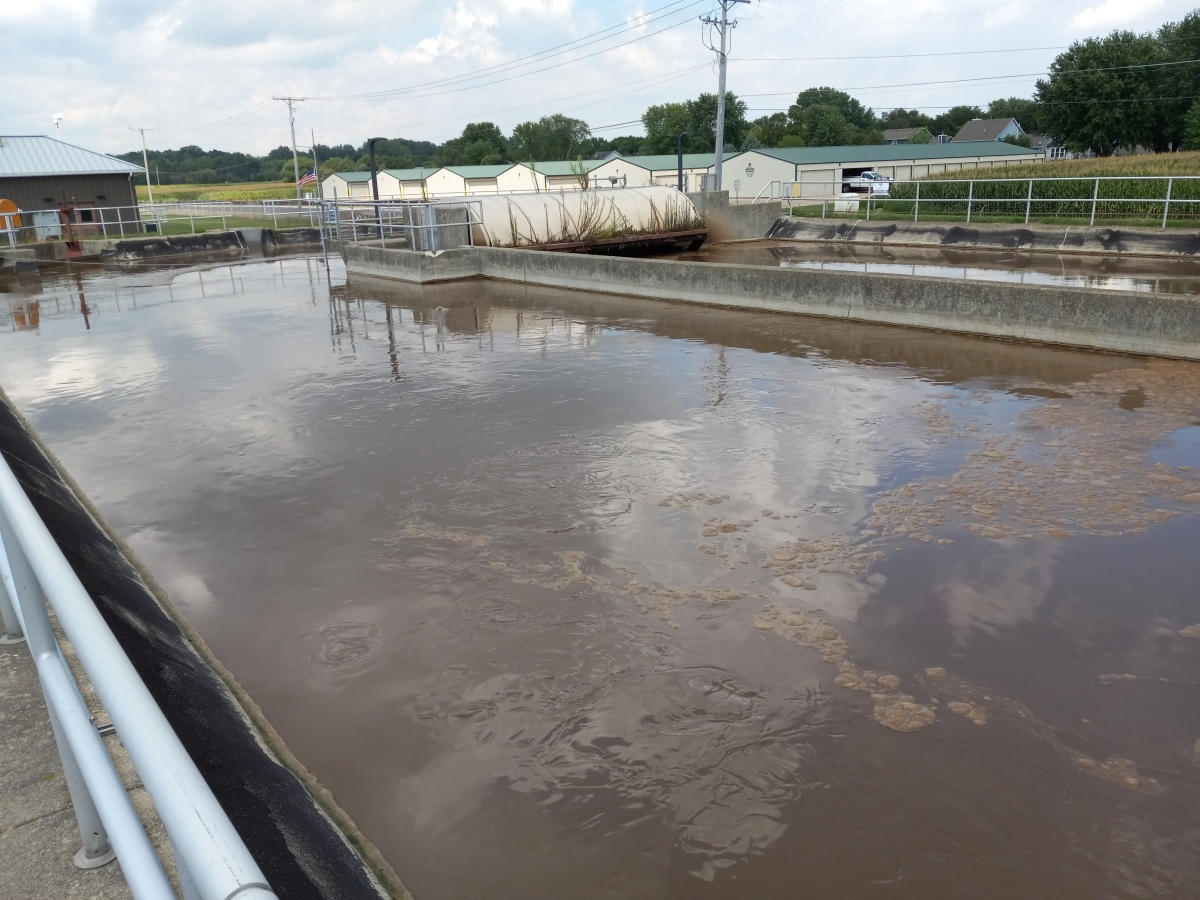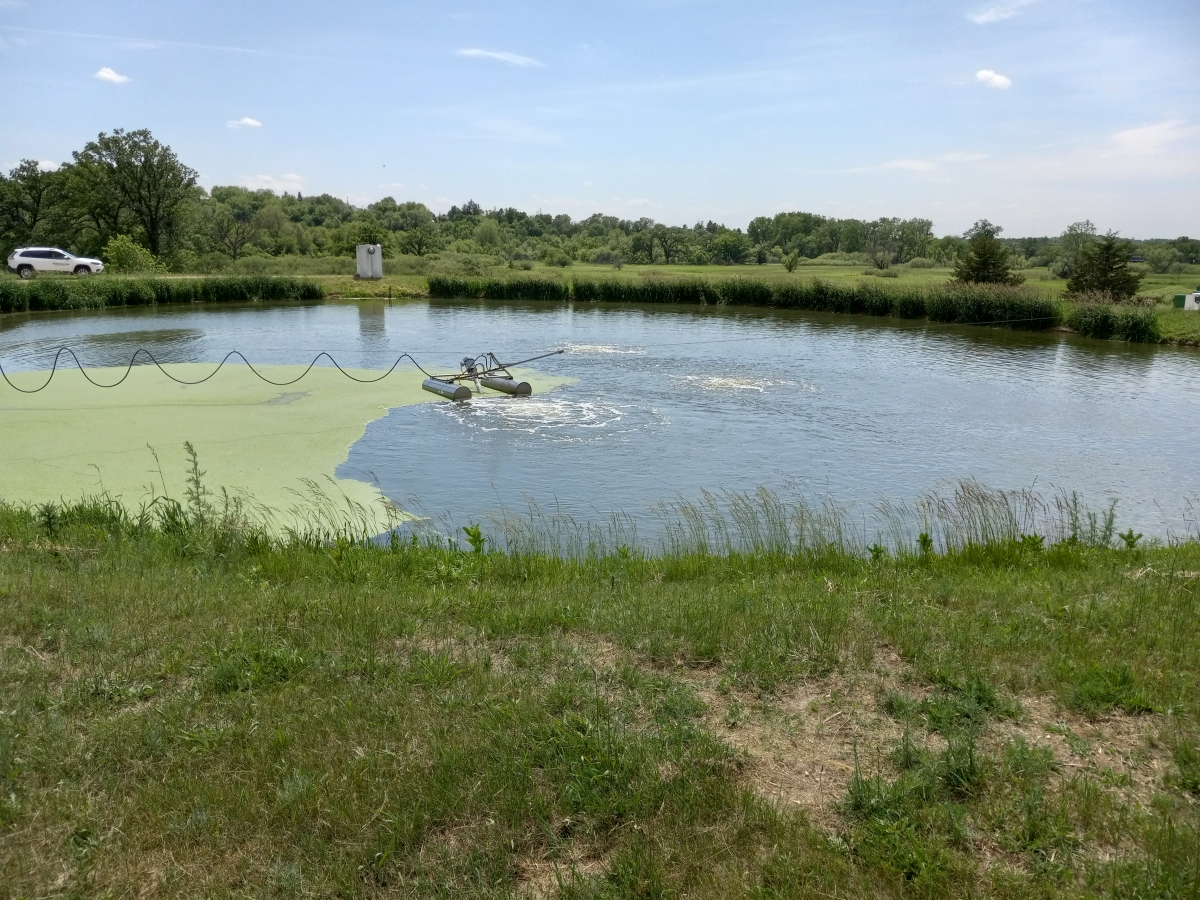How does the aeration process in wastewater treatment work to consume organics?
Aeration – or the addition of oxygen – is one of the most critical and energy-intensive processes in wastewater treatment, consuming up to 50 to 60% of the overall energy required by a wastewater treatment plant (WWTP). Aeration produces dissolved oxygen (DO) to facilitate the growth of microorganisms and is used across all stages of wastewater treatment.
Finding the optimal amount of aeration directly affects wastewater treatment efficiency. Lower aeration inhibits the nitrification reaction in the system, resulting in low DO concentration and continually expanding sludge in the aeration tank. A greater aeration volume leads to higher DO concentration and increased air agitation and sedimentation of suspended solids. As the wastewater quality declines, treatment costs increase because of higher energy consumption.
Below, we discuss the aeration process in wastewater treatment through primary, secondary and tertiary stages and why you need to partner with a team of experienced wastewater engineers to determine the proper aeration system for your local publicly owned treatment works (POTW).
Aeration process in wastewater treatment
In wastewater treatment, the aeration process brings water and air into close contact to oxidize dissolved metals and remove dissolved gases and volatile organic compounds. Aeration improves effluent quality during the following steps in the treatment process:
- Aeration in grit chambers during primary treatment. Once large solids are screened out, the effluent enters an aerated grit removal system where the air pushes a spiral of water through the tank to remove heavier particles from the streamline. The oxygen bubbling through the water keeps organic matter suspended while forcing grit to settle. This also helps if the incoming influent is too septic.
- Aeration during secondary treatment. Most municipal WWTPs implement aeration in the secondary stage during the activated sludge process. In the aeration tank, the pumped sewage mixes with air and sludge, which is loaded with microbes. The microbes feed on organic contaminants in the wastewater and metabolize them to release byproducts, including ammonia, carbon dioxide and water.
- Post aeration during tertiary treatment. An oxygen-depleting chemical like sulfur dioxide is used to dechlorinate effluent in the tertiary stage. Treating the effluent using post-aeration helps maintain the required minimum amount of dissolved oxygen residual.
Based on the treatment stage, effluent quality and the capacity of a treatment plant, the most common types of aeration systems used in POTWs are:
- Packed-tower (static tube) aerators. These aerator towers can be up to 10 feet tall and require ample installation space. Wastewater falls from the uppermost end of the tower while air blows up into the water and collects contaminants before venting them outside. Filled with small pieces of plastic or ceramic packing material, these aerators are highly efficient and relatively easy to maintain but consume significant energy.
- Diffused-bubble aerators. This aeration system consists of a diffuser and numerous chambers. The diffuser creates small bubbles carrying contaminants in the effluent. As the bubbles flow through each chamber in the vent system, the contaminants get separated. The more chambers in a diffused-bubble aerator system, the greater its efficiency. It can be used effectively in combination with other types of aeration systems in deep tanks. However, such systems have higher upfront costs, and the multiple chambers make them prone to accumulating dirt.
- Spray aerators. In spray aerators, effluent enters the top of the system and passes through the spray heads as a fine mist. A vented tank collects the treated water and releases contaminants outside. Designed especially to remove low amounts of volatile contaminants, spray aerators are relatively more affordable than other aeration systems and are easy to maintain and install in POTWs with limited space. The system, however, is less efficient when treating high volumes of wastewater.
- Surface (mechanical, high-speed) aerators. The floating mechanical aerator uses a pump to spray wastewater into the air, creating more surface area for atmospheric pressure to drive oxygen into the water. The oxygen-enriched effluent disperses and mixes simultaneously, producing highly effective aeration.
Surface aerators are widely used in ponds or lagoon systems — modified activated sludge biological treatment processes that remove biodegradable organics. Vertically or horizontally mounted aerators produce circulation, oxygen transfer and aeration in these ditches.
Surface aerators are portable, and have low capital costs and high efficiency ratings, even in shallow tanks. However, the efficiency of such systems is relatively less when compared to the performance of diffused-bubble aerators.
Optimizing the energy consumption of aeration systems is a priority for WWTP operators. The mixers in aeration systems keep biosolids suspended once the desired oxygen level has been achieved in aeration tanks or digesters. This saves significant amounts of energy during additional mixing.
Some communities with smaller populations use lagoon systems for wastewater treatment, using variable frequency drives and DO meters to adjust the aeration process and lower utility bills. Determining the right aeration system to help lower your treatment plant's energy bills while addressing the effluent demand requires expert guidance from a team of wastewater engineers.
Partnering with a wastewater engineer to select the right aeration system
At Fehr Graham, we understand the challenges municipalities face in designing aeration systems to treat wastewater per local effluent standards while optimizing energy consumption. From evaluating, planning and designing solutions to improve the efficiency of your community's POTW to helping you secure funding solutions for construction and upgrades, we can guide you to the best choices for effective and energy-efficient wastewater treatment operations.
To learn more about how Fehr Graham can help improve the aeration process in wastewater treatment at your local POTW, contact us or give us a call at 815.235.7643.
 |
Edgar Mendoza is a Water and Wastewater Operations Specialist. He specializes in process control of wastewater and water treatment facilities, wastewater collection sewer systems, pump stations, water distribution and storage systems. Contact him at |
Collaborative, Insightful, Results-Driven Solutions
Fehr Graham provides innovative engineering and environmental solutions to help improve the lives and communities of our customers.


